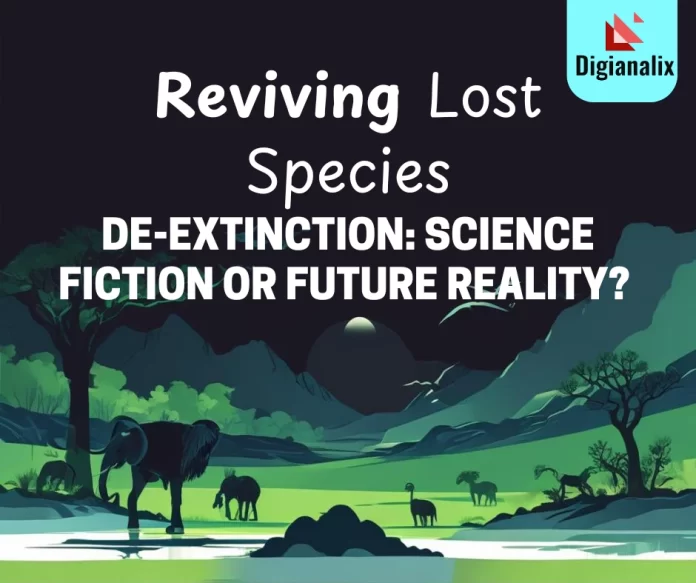Imagine walking through a nature reserve and spotting a woolly mammoth grazing peacefully or seeing a dodo bird fluttering in a sanctuary. Sounds like a scene from Jurassic Park, right? But what if I told you that science is getting closer than ever to making this a reality?
Yes, you read that right! Scientists and biotech companies are actively working on “de-extinction,” a field that aims to bring back species that disappeared from our planet. Thanks to advances in genetic engineering, CRISPR gene-editing, and synthetic biology, the idea of reviving extinct animals is no longer just science fiction. But how does it actually work? And more importantly, should we even do it?
How De-Extinction Works
Bringing back an extinct species is no easy feat. Here’s how scientists are approaching it:
- DNA Recovery & Sequencing: The first step is to recover viable DNA from preserved remains of the extinct species. For example, frozen woolly mammoth remains from the Siberian permafrost provide usable genetic material.
- Genome Editing (CRISPR to the Rescue!): Since DNA from extinct species is often degraded, scientists compare it with DNA from a close living relative (e.g., the Asian elephant for the woolly mammoth). Using CRISPR technology, they modify the DNA of the living species to match the extinct one as closely as possible.
- Cloning or Hybridization: The edited genes are inserted into an embryo, which is then implanted into a surrogate mother (typically from a closely related species) or developed using artificial womb technology.
- Reintroduction into the Wild: If successful, the revived species needs a suitable environment where it can survive and thrive. This raises complex ecological and ethical questions.
Who’s Leading the Charge?
Several biotech startups and research institutions are spearheading de-extinction projects:
- Colossal Biosciences: This Texas-based startup is investing heavily in bringing back the woolly mammoth, arguing that reintroducing these giants could help restore Arctic ecosystems.
- The Lazarus Project: Australian scientists have been working on reviving the gastric-brooding frog, an extinct species that gave birth through its stomach!
- Revive & Restore: A nonprofit focused on genetic rescue projects, including efforts to bring back the passenger pigeon and the black-footed ferret.
The Big Question: Should We Do It?
While the idea of reviving extinct species is exciting, it also sparks heated debates. Here are some of the key arguments for and against it:
Pros: ✅ Restoring lost ecosystems (e.g., mammoths could help slow permafrost thawing, reducing climate change effects). ✅ Scientific and medical breakthroughs (studying revived species could lead to new genetic discoveries). ✅ Reversing human-caused extinctions.
Cons: ❌ Ethical concerns (Should we “play God” with nature?) ❌ Ecological risks (What if these species become invasive or disrupt current ecosystems?) ❌ High costs (Funding de-extinction might divert resources from protecting endangered species today).
Final Thoughts: Science Fiction or Future Reality?
De-extinction is no longer just a wild idea from Hollywood movies. With rapid advancements in biotechnology, we may soon see extinct species roaming our planet once more. However, the real challenge is ensuring that these efforts are responsible, ethical, and beneficial to ecosystems.
So, what do you think? Should we bring back extinct species, or should we focus on saving the ones we still have? Drop your thoughts in the comments!
🔬 Stay tuned for more groundbreaking biotech news and insights at Digianalix!




